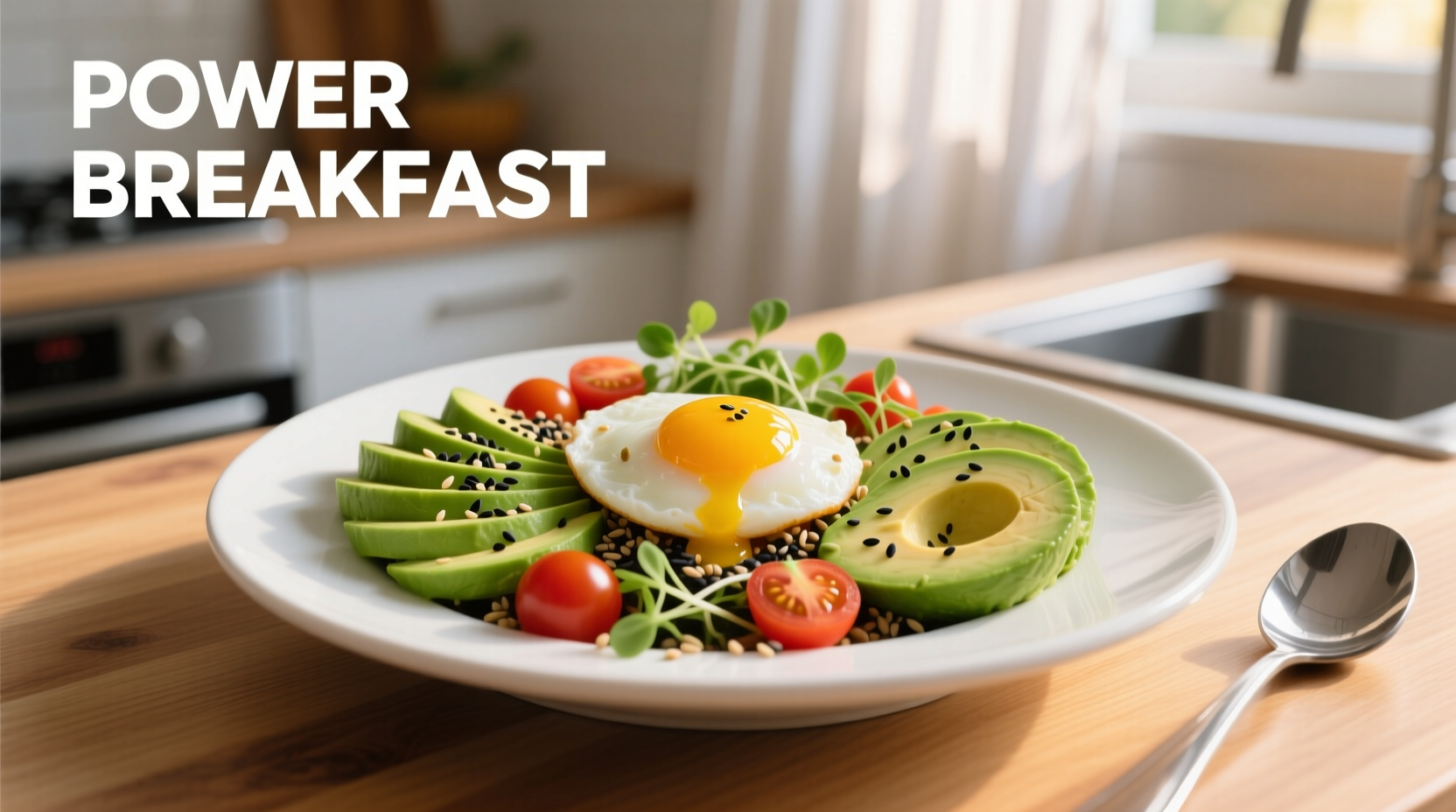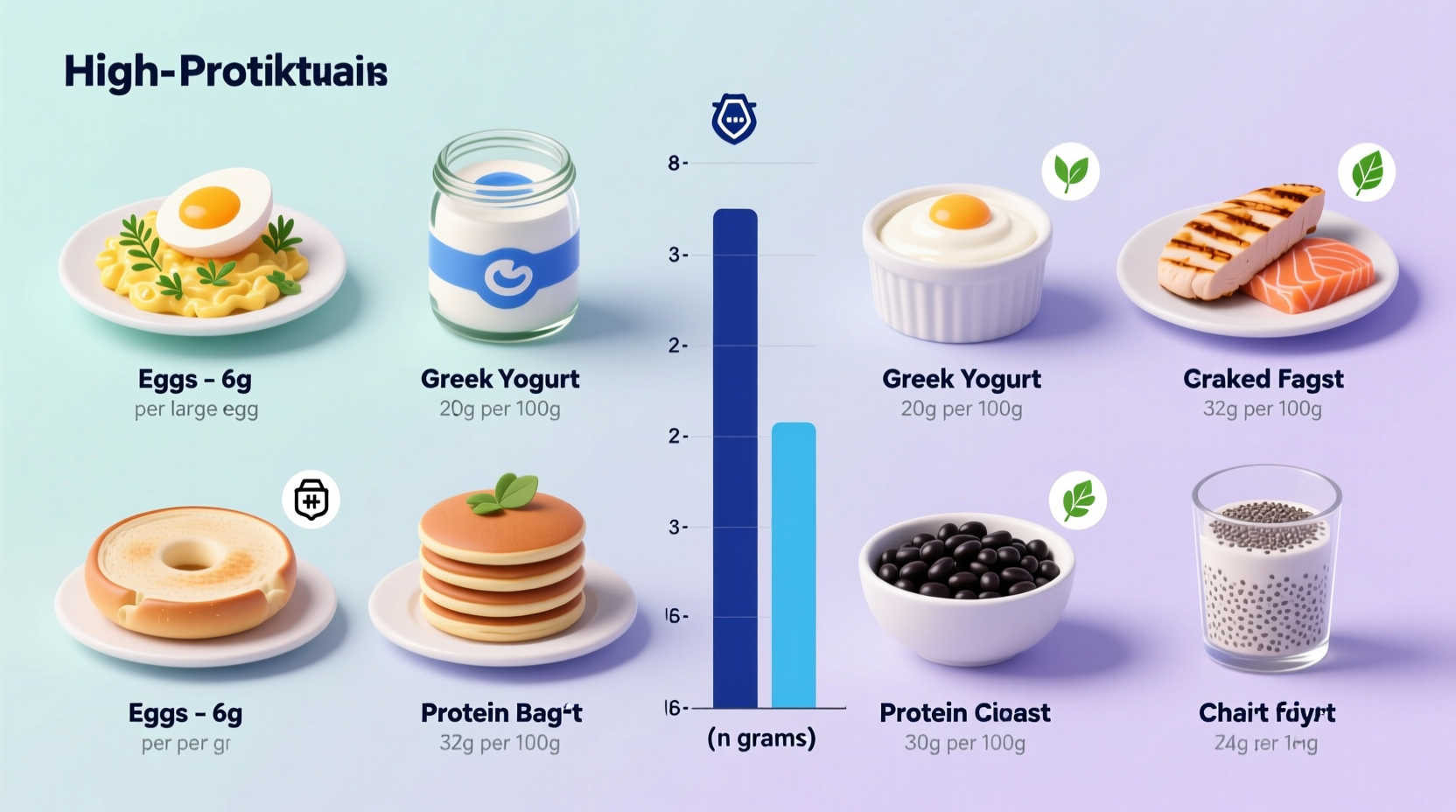Protein at breakfast isn't just for fitness enthusiasts—it's a science-backed strategy for better energy management throughout your day. Research shows that consuming 25-30 grams of protein at your first meal helps regulate blood sugar, increases satiety by 30% compared to carb-heavy options, and preserves lean muscle mass as you age. The American College of Sports Medicine recommends this protein threshold to maximize metabolic benefits.
Why Protein Power Matters First Thing
Your body enters a natural fasting state overnight, making morning the perfect opportunity to replenish amino acids. Unlike sugary cereals that cause energy crashes, high-protein breakfasts trigger dopamine release that enhances focus while slowing gastric emptying for longer-lasting fullness. A 2023 American Journal of Clinical Nutrition study found participants who ate 30g of morning protein consumed 440 fewer calories daily without conscious restriction.
Top High-Protein Breakfast Options by Category
Animal-Based Powerhouses
Eggs remain the gold standard for bioavailable protein. One large egg delivers 6 grams of complete protein with all nine essential amino acids. For maximum benefit, pair with vegetables—the fat-soluble vitamins in colorful produce enhance nutrient absorption. Smoked salmon provides 20g per 3-ounce serving with heart-healthy omega-3s, while turkey sausage offers 14g per patty with less saturated fat than pork alternatives.
Plant-Powered Choices
Vegans and vegetarians shouldn't compromise on protein quality. Tempeh delivers 15g per 3-ounce serving with probiotic benefits from fermentation. A half-cup of cooked lentils provides 9g of protein plus 8 grams of fiber. For quick preparation, blend silken tofu into smoothies—it adds 10g per half-cup without altering flavor while providing calcium and iron.
| Food | Protein (per serving) | Prep Time | Complete Protein? |
|---|---|---|---|
| Greek yogurt (plain, 1 cup) | 17g | 1 minute | Yes |
| Cottage cheese (1 cup) | 25g | 1 minute | Yes |
| Scrambled eggs (2 large) | 12g | 5 minutes | Yes |
| Tempeh bacon (3 oz) | 15g | 10 minutes | Yes |
| Protein powder shake (1 scoop) | 20-30g | 2 minutes | Varies |
Smart Implementation Strategies
Busy professionals often struggle with morning protein intake. The solution isn't complicated meal prep—try these evidence-based shortcuts:
- Night-before assembly: Layer Greek yogurt with chia seeds and berries in mason jars (18g protein)
- Freezer-friendly: Make egg muffins with spinach and feta (10g per muffin)
- 5-minute option: Top whole-grain toast with cottage cheese and everything bagel seasoning (22g protein)
Registered dietitians emphasize combining protein with fiber for optimal blood sugar control. The USDA's MyPlate guidelines recommend filling half your breakfast plate with vegetables when possible—try adding sautéed mushrooms to your eggs or blending spinach into protein shakes.

Special Dietary Considerations
When selecting high-protein breakfasts, consider these context-specific factors:
- Dairy sensitivity: Choose lactose-free cottage cheese or plant-based alternatives like pea protein yogurt
- Kidney health: Consult your physician about appropriate protein levels if managing kidney conditions
- Weight management: Prioritize lean proteins like egg whites or turkey sausage to reduce saturated fat intake
- Vegan nutrition: Combine complementary proteins (e.g., beans + whole grains) to ensure complete amino acid profile
A common misconception is that high-protein breakfasts must be expensive. However, bulk purchases of eggs, canned beans, and plain Greek yogurt deliver the best protein-per-dollar value. According to USDA economic research, a protein-rich breakfast costs only 15-20% more than sugary cereal options when planned strategically.
Avoid These Protein Pitfalls
Many commercial "high-protein" breakfast products contain hidden drawbacks:
- Protein bars often pack 20+ grams of added sugar—check labels for options with ≤5g sugar
- Flavored yogurts can contain as much sugar as dessert—opt for plain varieties and add fresh fruit
- Processed meat alternatives frequently include artificial additives—choose whole food sources when possible
The Academy of Nutrition and Dietetics emphasizes that whole food protein sources provide additional nutrients beyond isolated protein powders. For example, eggs contain choline for brain health, while nuts offer healthy fats that enhance vitamin absorption.
Frequently Asked Questions
How much protein should I eat at breakfast?
Most adults benefit from 25-30 grams of protein at breakfast. This amount maximizes muscle protein synthesis and satiety based on research from the Journal of the American College of Nutrition. Adjust based on your body weight—aim for 0.4-0.5 grams of protein per kilogram of body weight per meal.
Can I get enough protein without meat?
Absolutely. Combining plant proteins like tofu with whole grains creates complete protein profiles. A breakfast of tempeh scramble with quinoa (15g protein) plus a side of black beans (7g protein) delivers 22 grams of high-quality protein without animal products.
Does cooking affect protein content?
Proper cooking actually increases protein digestibility. Boiling eggs makes their protein 91% digestible versus 50% when raw. However, excessive high-heat cooking can damage some amino acids—use moderate temperatures for optimal nutrient retention.











 浙公网安备
33010002000092号
浙公网安备
33010002000092号 浙B2-20120091-4
浙B2-20120091-4